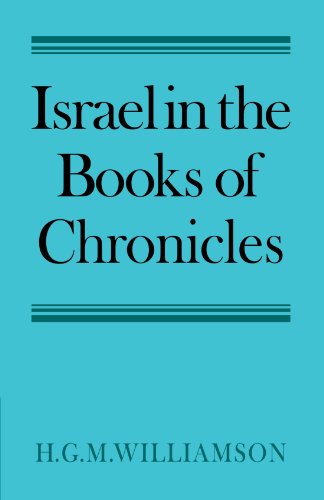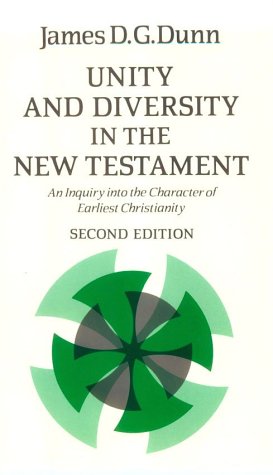Israel in the Books of Chronicles
Written by H. G. M. Williamson Reviewed By David J. A. ClinesThe point of this erudite and closely reasoned book by one of Britain’s younger evangelical scholars can be simply stated: contrary to common scholarly opinion, the Chronicler did not believe that the northern tribes had permanently written themselves off from divine favour, but that even in his own day survivors of the northern tribes should be welcomed, with due circumspection, into the reconstituted community of the fourth century bc. In espousing this position, Williamson argues, the Chronicler was steering a middle course between tendencies within the Jerusalem community either towards a hostile separatism from all who did not already belong to the Judean community or towards an easy-going assimilation of the syncretistic worship practised in the Samarian sphere of influence.
In so arguing, Hugh Williamson has set himself, rightly in my judgment, against the received view, as stated for example by G. von Rad, that for the Chronicler Benjamin and Judah (with the Levites) alone constitute true Israel, and that the rest of the tribes are lost for ever. That view is lent some colour initially by the obvious fact that, in contrast to Kings, Chronicles does not record the history of the northern kingdom. But the fact may be accounted for on other grounds, such as the Chronicler’s concern with David and the Jerusalem temple, without any necessary implication of a rejection of the northern tribes. What needs to be brought into the discussion are those elements of the Chronicler’s work that present twelve-tribe Israel in a positive light. First, the genealogies of 1 Chronicles 1–9 concern all (or almost all) the tribes. Secondly, during the period of the united monarchy, anticipations of the division of the kingdom noted by Samuel-Kings are omitted by the Chronicler, while the full participation of all the tribes is stressed on various occasions. Thirdly, during the divided monarchy, while the term ‘Israel’ can be applied to the southern tribes, the northern tribes retain their right to that title, and only gradually put themselves in a position that the Chronicler can term a ‘forsaking’ of Yahweh; even so, repentance remains a possibility. Fourthly, Hezekiah is regarded by the Chronicler as a second Solomon, to the extent of inviting to his Passover celebrations all Israel ‘from Dan to Beersheba’ (2 Chr. 30:5).
This positive attitude to the northern tribes seems, however, strangely at odds with the Jerusalem-centred exclusivism apparently supported by Ezra and Nehemiah, the narratives concerning whom are generally thought to have formed part of the Chronicler’s work. Dr Williamson makes the bold move, not unparalleled and increasingly gaining adherents, of denying that Ezra-Nehemiah belonged to the Chronicler’s history. In fact the first half of his book (pp. 5–70) is devoted to a comprehensive argument for this view, for the extent of the Chronicler’s work obviously needs to be determined before the Chronicler’s attitude to Israel can be assessed. Here the author employs the ‘adversary’ method beloved of British judicial practice (prosecution versus defendant) rather than the Continental ‘inquisitorial’ method of enquiry into all conceivably relevant facts. Dr Williamson is thus able to score some neat and well-deserved points over the often uncritically adopted consensus, but he fails to convince the present reviewer at least that the evidence as a whole leaves the balance of probability on the side of the diversity of authorship.
The four main arguments for the unity of Ezra and Nehemiah with Chronicles are carefully reviewed:
(i) The presence of Ezra 1:1–2 at the end of 2 Chronicles. Williamson argues that the overlap does not automatically demand unity of authorship; that is true, but it is asking too much to require cast-iron proof, and Williamson is unable to offer any satisfactory solution to the question of how the overlap occurred if the two were not originally linked. Appeal to postulated developments in the canonization of various books is unsatisfactory, since we do not know the rationale or history of the process as it affects these books.
(ii) The coherence of 1 Esdras, which begins with 2 Chronicles 35 and continues without interruption into Ezra. Here, in a highly complex argument, Williamson undoubtedly has the better of Mowinckel, Pohlmann, and others, in showing that 1 Esdras is a secondary work (though he might have added that its text may preserve some readings more original than the MT’s, as Klein has argued). The result of this particular investigation is then a non liquet as far as the major issue is concerned.
(iii) The similarity between the books in style and vocabulary. Here the issue is whether the dissimilarities outweigh the admitted similarities. Williamson has done us a service by showing that much of the quoted evidence for similarity is irrelevant or inconclusive; too often lists of peculiarities or mannerisms in Chronicles-Ezra-Nehemiah that were intended to illustrate the (presupposed) unity of these books have been used as evidence for their unity. But when we come to the list of 28 terms (pp. 52–58), the use of which Williamson regards as indicative of diverse authorship, his case (like the similar one of S. Japhet) is less than persuasive. I would doubt that the fact that mcl ‘to trespass’ is used nearly always in Chronicles to refer to an offence in connection with the temple but in Ezra-Nehemiah to the offence of intermarriage with Gentiles is of any significance whatever. The frequent use of drs ‘to seek, enquire of, God’ in Chronicles (c. 30 times) as against its use on only three occasions in Ezra is probably not significant statistically in view of the comparative length of the books. Again, the peculiar use of ‘my’rṣwt ‘the peoples of the land’ in Ezra-Nehemiah as distinct from Chronicles can easily be accounted for by the changed political circumstances. Several larger issues need resolving before any of Williamson’s statistics can be taken as firm evidence: (a) What are the statistical probabilities of an author using a term more heavily in one part of his work than another? (b) Can passages be found where the term ought to appear (by reason of the subject matter) but does not? (Williamson sometimes takes this point into consideration, but not consistently); (c) To what extent do we have Chronistic composition in Chronicles compared with the extent of postulated Chronistic material in Ezra-Nehemiah? (Nehemiah contains very little that its editor, whether the Chronicler or not, did not draw from some source; it is hardly surprising that typically Chronistic terminology is rare here); (d) Why should a study of ‘style’ be confined to vocabulary, and not include syntax, sentence structure, and rhetorical elements?
(iv) The similarity of ideology. Williamson is naturally on the lookout for differences, though he does admit the large area in which the ideology of the Chronicler and of Ezra-Nehemiah overlap. Most striking is the attitude taken over ‘mixed marriages’. The Chronicler nowhere condemns mixed marriage, but—especially in his genealogies—records several without comment. Though Nehemiah asserts that Solomon’s foreign wives were the cause of his sin (Neh. 13:26), the Chronicler actually omits from his account of Solomon the very reference he found in 1 Kings 11:1ff. to Solomon’s wives! Nevertheless, we may ask: (a) since Nehemiah 13 is plainly from Nehemiah’s memoirs, and is not the Chronicler’s creation, must we assume that the Chronicler shared Nehemiah’s views entirely?, or (b) even if he did, was he obliged to spoil his rosy picture of Solomon by a reference to the foreign wives—which every Jew knew about anyway—for the sake of a cross-reference to Nehemiah 13?, and (c) can we be sure in any case that Nehemiah 13, with its shaky attachment to what may well be claimed to be the last words of the Chronicler himself (12:44–47), originally belonged in ‘the’ Chronicler’s work? To take one further point of ideology: in Ezra-Nehemiah, the community is depicted (says Williamson, following Vogt) as the heir of the Israel of Exodus and Conquest. In Chronicles, however, the Exodus gives ground to the stress on the Davidic covenant and the temple. Yet if we assume that the Chronicler could have been the author of the whole work, what else could we expect? Clearly he regards the Davidic establishment as the best thing that ever happened to Israel, but it is hardly surprising that the same author, when writing of the post-exilic community, should find no place for the covenant with the Davidic dynasty. Perhaps the community itself has taken over the role of David, or perhaps the Chronicler is a crypto-eschatologist, or perhaps he is just being realistic. To be sure, there is a tension, but not one that I find impossible or even unlikely, given the historical circumstances of the monarchic and post-exilic period.
Enough has been said to indicate the considerable importance of this book. On what I take to be his main point, the attitude of the Chronicler toward Israel, Hugh Williamson has made out his case. As for the extent of the Chronicler’s work, the case for limiting it to 1–2 Chronicles has been put in the most persuasive and competent form yet presented. I believe it is possible to resist Williamson’s decision on this issue while agreeing with him on the former; for me the similarities still outweigh the dissimilarities, and the so-called exclusivism of Ezra and Nehemiah is to be subsumed under an admission that Israel means more than Benjamin, Judah, and Levi (cf. Ezr. 6:21).
David J. A. Clines
University of Sheffield






